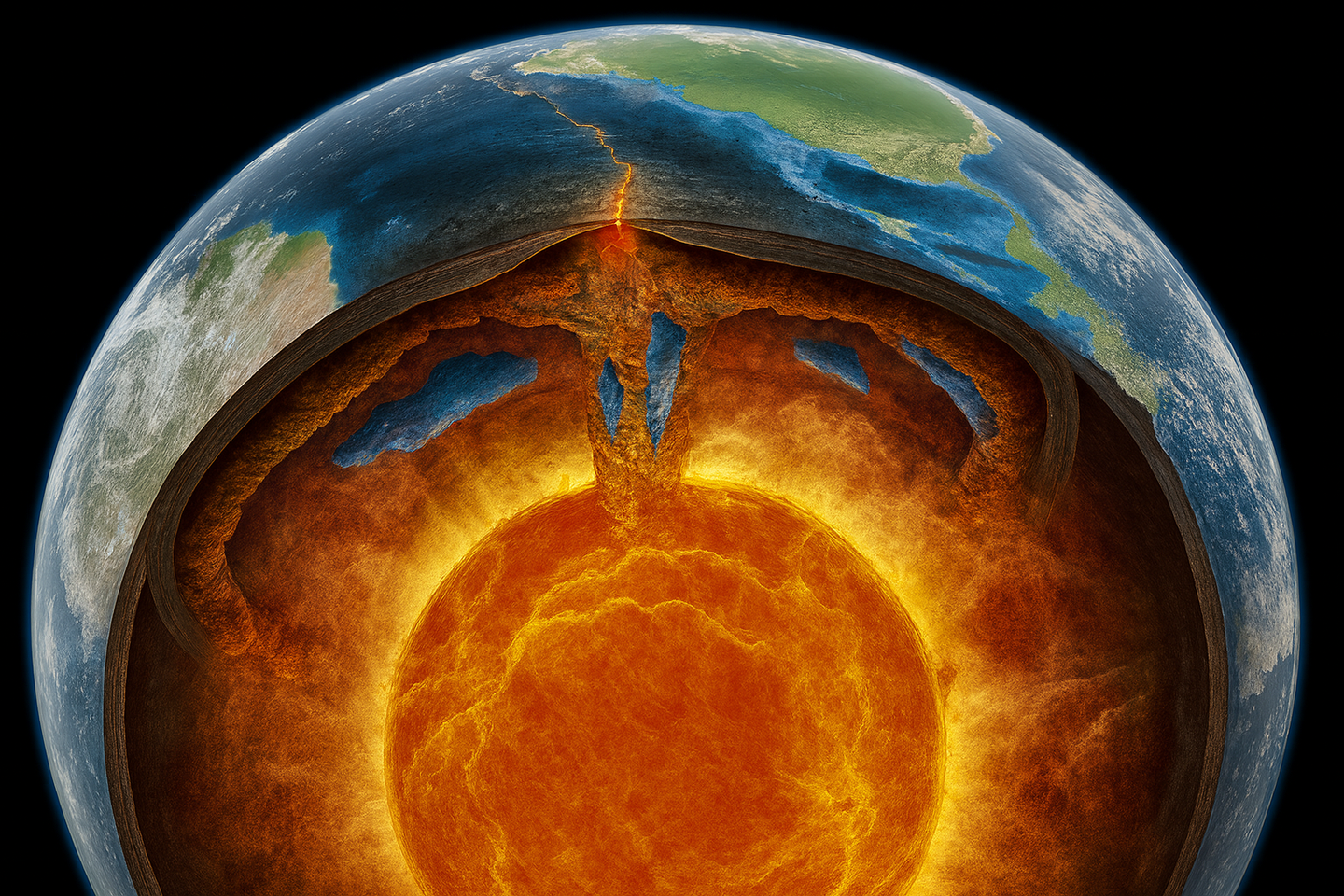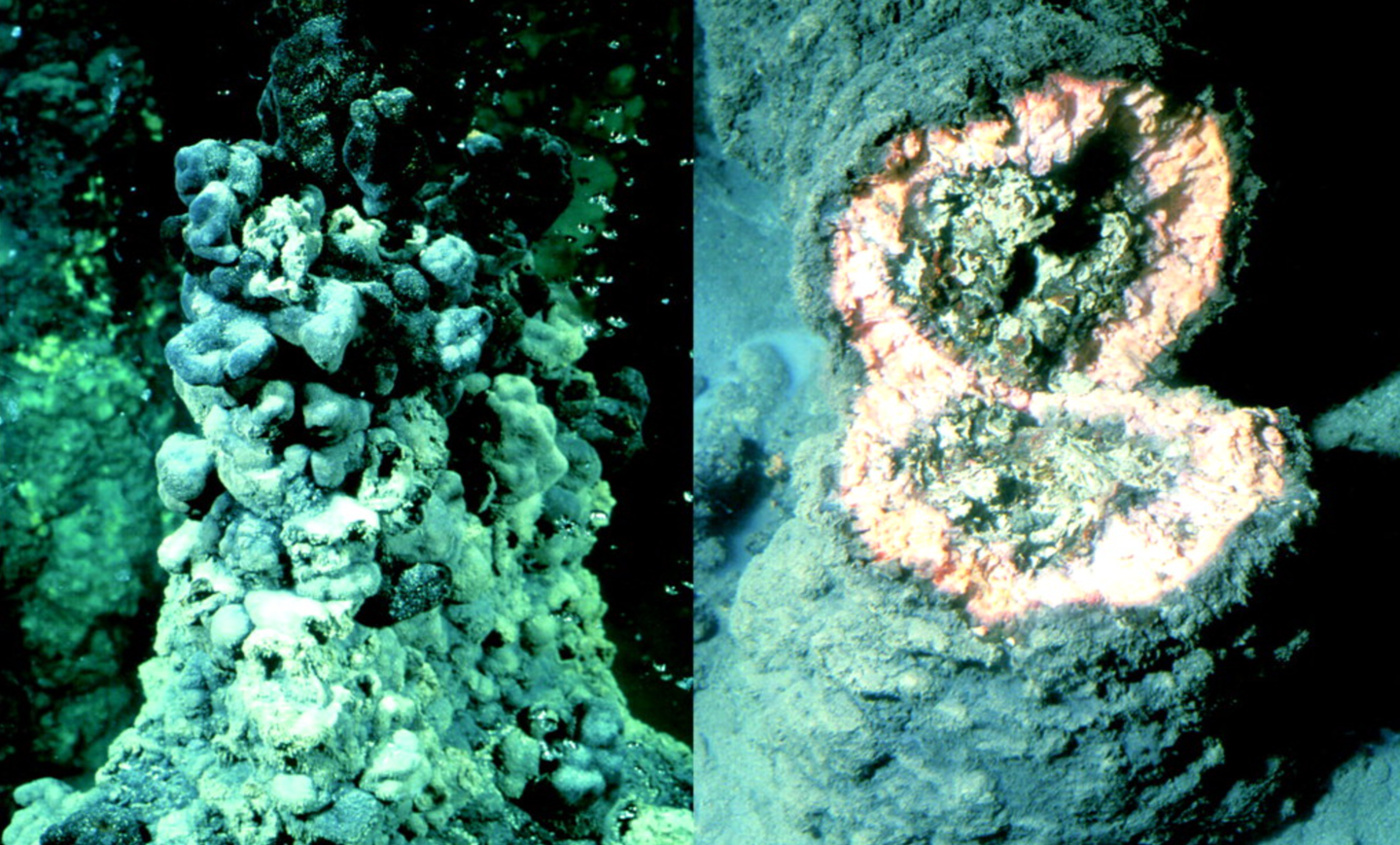Scientists detect the building blocks of life surrounding star V883 Orionis
ALMA detects life’s building blocks in planet-forming disc, reshaping theories of where and how complex molecules form in space.

Artists impression of V883 Orionis. Astronomers using ALMA have spotted complex organic molecules in V883 Orionis’s protoplanetary disc, reshaping how we think life begins. (CREDIT: A. Angelich (NRAO/AUI/NSF)/ALMA (ESO/NAOJ/NRAO))
In a star system far, far away—well, about 1,300 light-years from here—a young star just spilled the chemical tea on the origins of life. V883 Orionis, a fiery infant star surrounded by a swirling disc of dust and gas, has become the latest cosmic celebrity for revealing a hidden stash of complex organic molecules—some of the very building blocks that may have kick-started life on Earth.
Thanks to the Atacama Large Millimeter/submillimeter Array, or ALMA (yes, astronomers do love acronyms), scientists got a front-row seat to this molecular matinee. ALMA isn't just any telescope; it's a network of radio dishes perched high in Chile’s Atacama Desert, sniffing out radio signals from space with the finesse of a bloodhound tracking cookies in a windstorm.
Prebiotic Molecules Found Where Planets Are Born
Here’s where things get spicy. A research team led by Abubakar Fadul from the Max Planck Institute for Astronomy managed to spot not one, but seventeen complex organic molecules in V883 Orionis’s protoplanetary disc. Among them were ethylene glycol—the same compound used in antifreeze—and glycolonitrile, a gnarly-sounding but crucial ingredient that can lead to amino acids like glycine and alanine, as well as the nucleobase adenine.
Before you write them off as cosmic soup gone stale, understand this: these molecules are the real deal. They’re precursors to life, thought to play a role in the birth of DNA, RNA, and even proteins. And now we know they can show up not just in asteroids or interstellar clouds, but right in the nursery where planets—and potentially life—are forming.
Fadul and his team published the juicy details in the Astrophysical Journal Letters, making your daily horoscope look pretty weak by comparison.
From Space Ice to Earth Life
For years, astronomers have tracked organic molecules floating around in space. They’ve been spotted in interstellar clouds, the frosty envelopes of protostars, and the murky guts of meteorites and comets. But here’s the twist: many scientists assumed that the violent processes of star formation—explosions, shocks, radiation, the works—would wipe the chemical slate clean. Like tossing a hard drive into a bonfire and expecting to recover grandma’s banana bread recipe.
Related Stories
- New scientific discovery reveals the origin of life on Earth
- Phosphorus from space could help explain the origins of life on Earth
- New SETI program helps students detect signs of advanced life beyond Earth
This idea, dubbed the “reset” scenario, suggested any prebiotic molecules had to be rebuilt from scratch in young solar systems. But the latest findings toss that theory into the nearest black hole.
“Our finding points to a straight line of chemical enrichment and increasing complexity between interstellar clouds and fully evolved planetary systems,” said Fadul.
Kamber Schwarz, also from MPIA and a co-author, wasn’t subtle about it either. “Our results suggest that protoplanetary discs inherit complex molecules from earlier stages,” she said, adding that the disk phase might even boost their numbers.
Translation: the chemical ingredients for life don’t need to start from zero. They ride shotgun all the way from interstellar space, surviving the chaos of star birth and growing up along the way.
V883 Orionis: A Cosmic Microwave
So how did these molecules end up on our radar in the first place? You can thank one very hot star. During its growth spurts, V883 Orionis experiences major outbursts. These surges of energy act like a microwave, heating the surrounding icy disc and vaporizing frozen chemicals into a detectable gas. That process is a jackpot for astronomers, who then pick up the escaping signals using ALMA.
“Complex molecules, including ethylene glycol and glycolonitrile, radiate at radio frequencies. ALMA is perfectly suited to detect those signals,” Schwarz explained.
Of course, it wasn’t easy. The molecules are shy. They don’t exactly jump out in a clear signal. Fadul’s team had to comb through a dense forest of spectral lines in the 348–366 GHz frequency range, using data from six separate observation sessions between December 2021 and September 2022. And that’s just scratching the cosmic surface.
“There’s still work to do. We haven’t disentangled all the signals yet,” Schwarz admitted. With higher resolution data, they hope to confirm what they’ve seen—and maybe even unearth more complex molecules still hiding in the noise.
Not Just a One-Star Show
The implications of this discovery go way beyond V883 Orionis. For starters, it proves that chemical evolution isn’t limited to Earth or our own solar system. These molecules could be forming in dusty discs all over the galaxy, waiting to seed life wherever the conditions are right.
Before this, molecules like glycolaldehyde and ethylene glycol had been spotted in comets and some interstellar clouds. Even glycine, the simplest amino acid, was detected by ESA’s Rosetta mission at comet 67P. But never had these compounds been seen so clearly in a disc where planets might actually be taking shape.
Tushar Suhasaria, head of MPIA’s Origins of Life Lab, added a zinger: “We recently found ethylene glycol could form by UV irradiation of ethanolamine, a molecule that was recently discovered in space.” Basically, cosmic UV rays might be nature’s chemistry set, building life-friendly compounds long before planets ever form.
From Ice to Insight
One challenge has always been figuring out what’s buried in those icy cosmic grains. Most of these molecules stay frozen solid until a heat source—like a nearby star or comet’s brush with the Sun—liberates them into gas. That’s when spectroscopy can catch their unique light signatures.
In the case of V883 Orionis, the sudden heat surge turned what was once ice into a beacon of life’s possible ingredients.
ALMA’s sharp eyes and high altitude helped detect these gases at just the right moment. Sitting 5,000 meters up in Chile’s Atacama Desert, the observatory was perfectly placed to spot even the faintest whispers of chemical complexity.
The team’s work is a step toward understanding how life might begin elsewhere—and, by extension, how it began here.
Stay Tuned for More Space Chemistry
No one’s claiming this is proof of life out there. But the molecular breadcrumbs are stacking up. Ethylene glycol and glycolonitrile in a planet-forming disc? That’s a headline-worthy hint that the galaxy may be full of Earth-like starter kits.
Fadul is already thinking ahead. “Perhaps we also need to look at other regions of the electromagnetic spectrum to find even more evolved molecules,” he said. That means more frequencies, more data, and probably more late nights at the telescope.
As astronomers keep tuning in to the molecular signals of the cosmos, one thing’s becoming clear: space isn't just cold and dark—it’s also surprisingly gooey, chemically rich, and maybe even life-friendly.
Note: The article above provided above by The Brighter Side of News.
Like these kind of feel good stories? Get The Brighter Side of News' newsletter.



